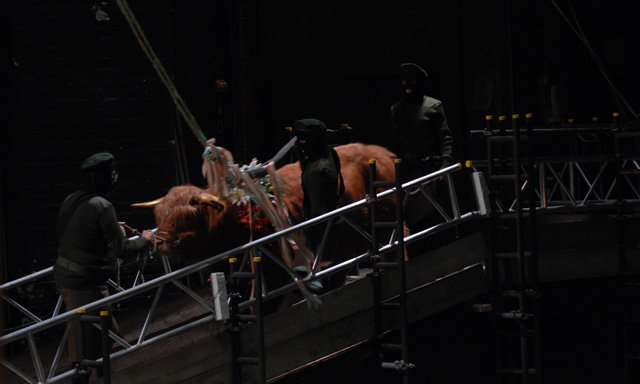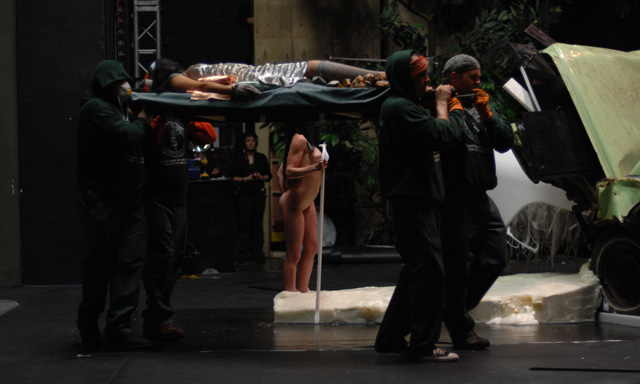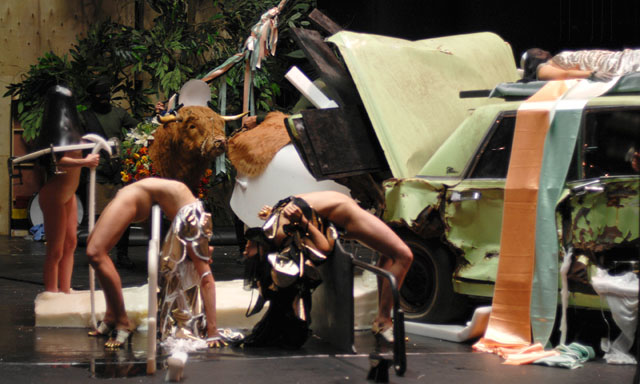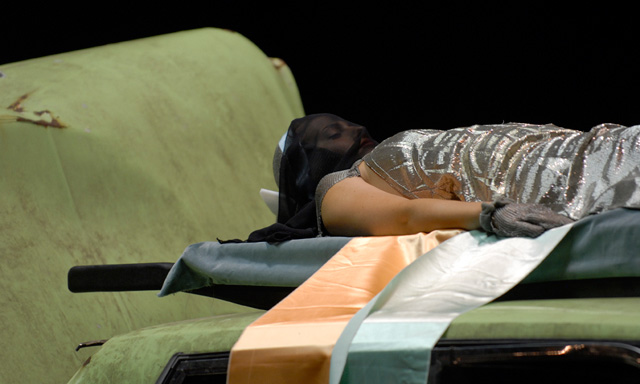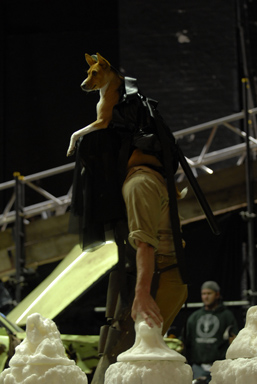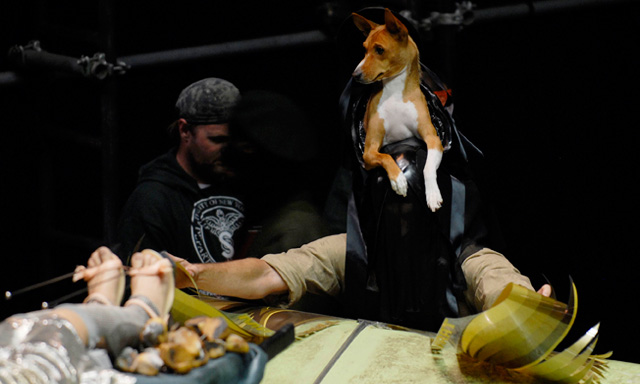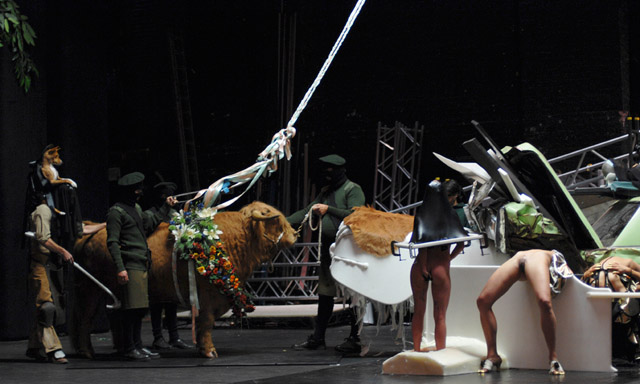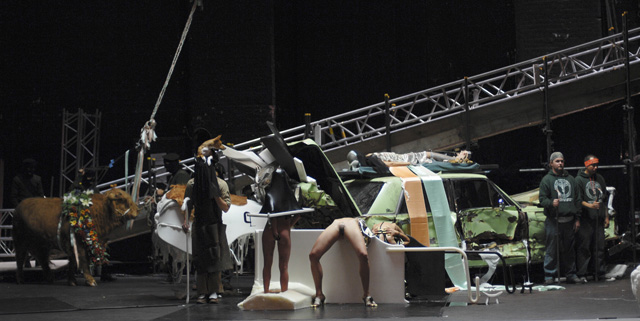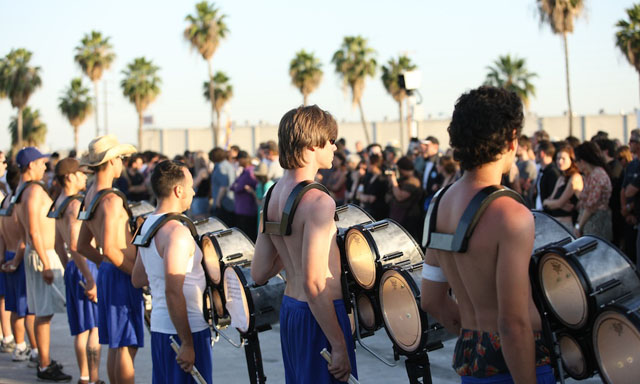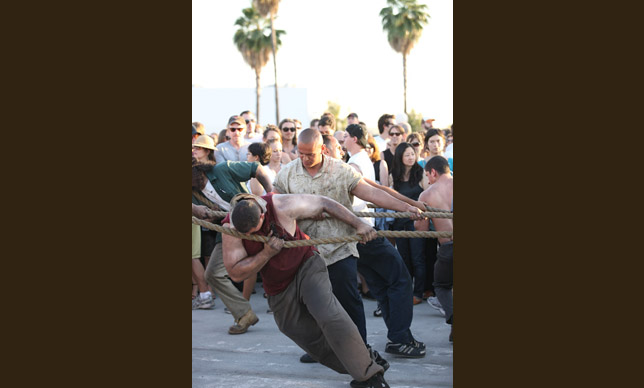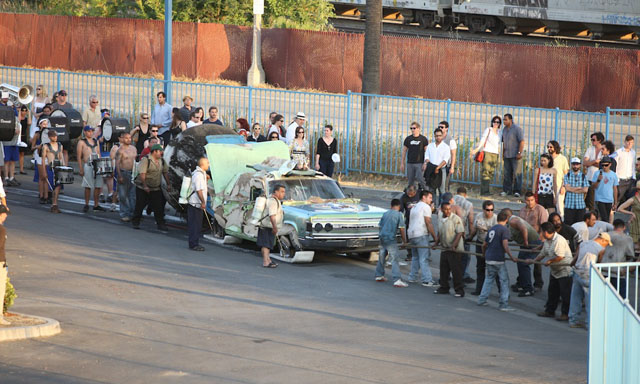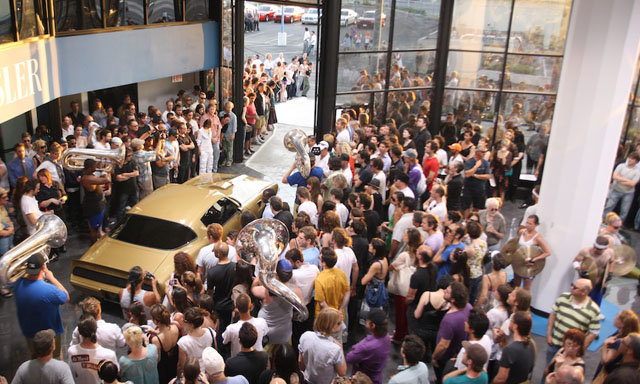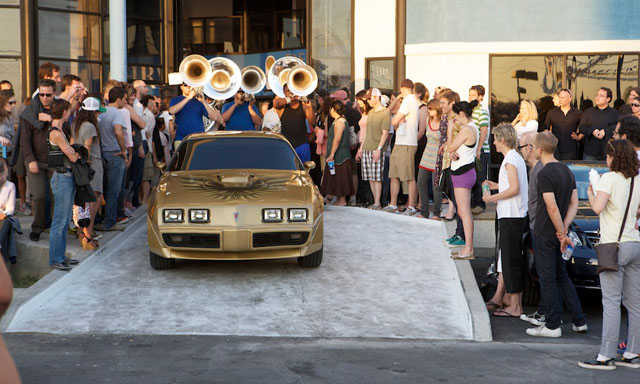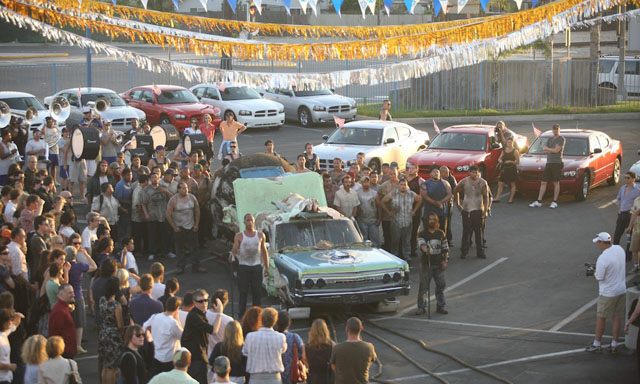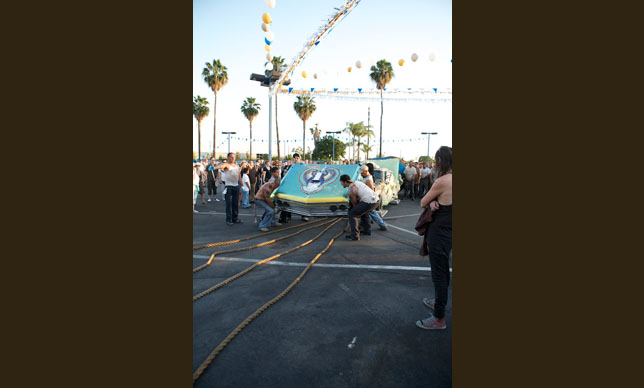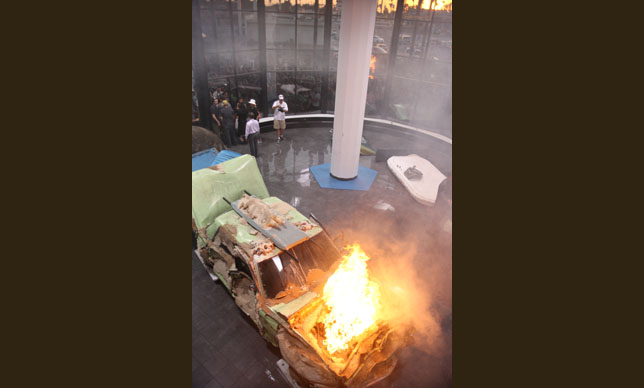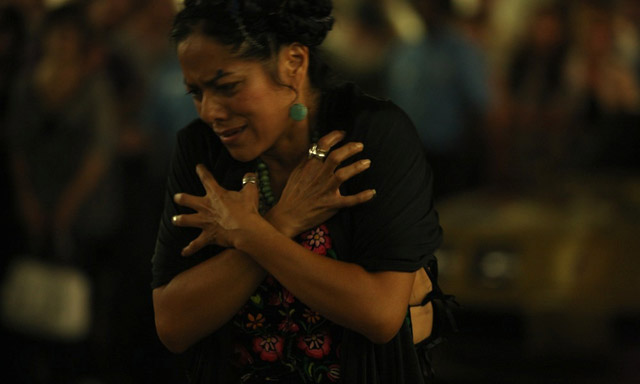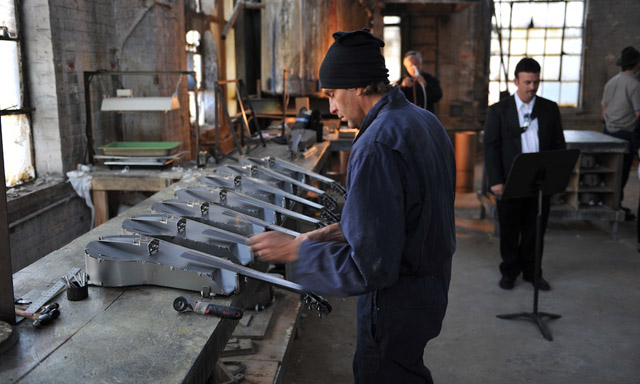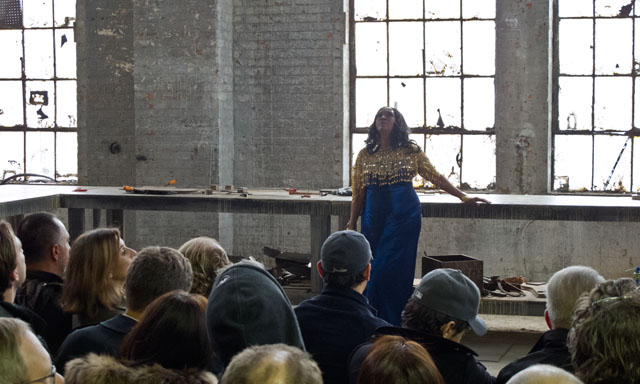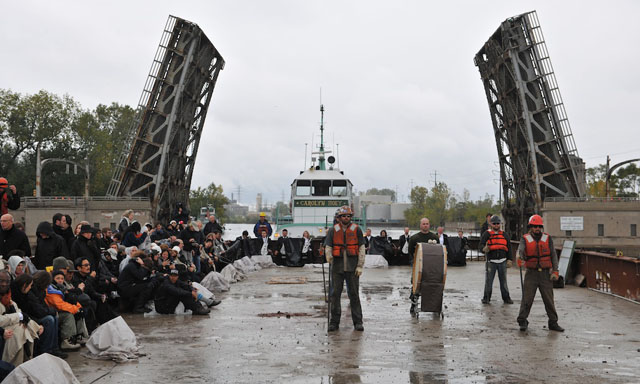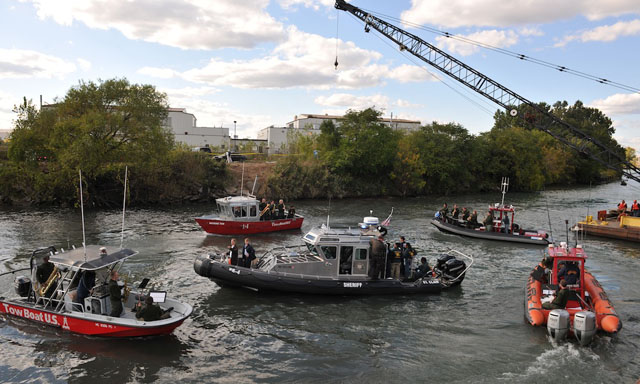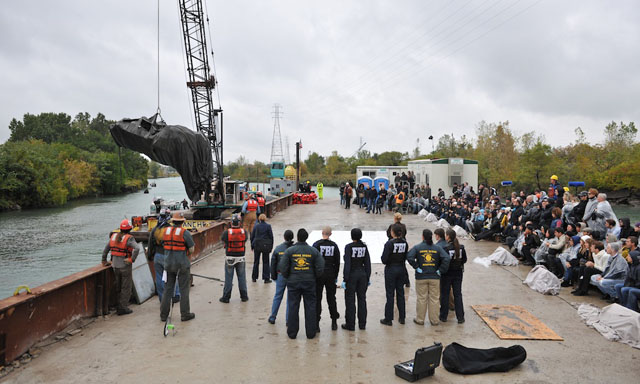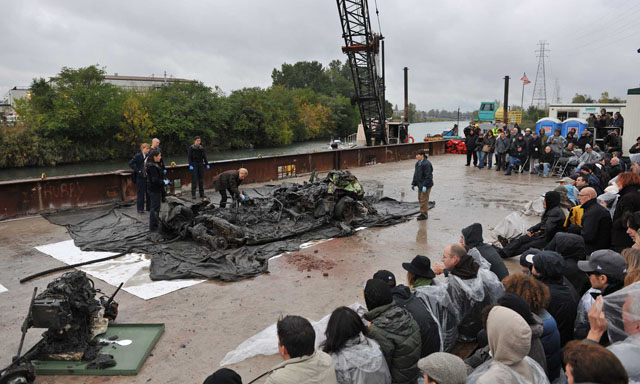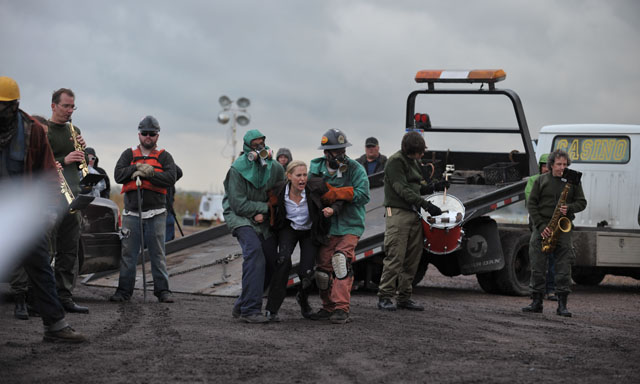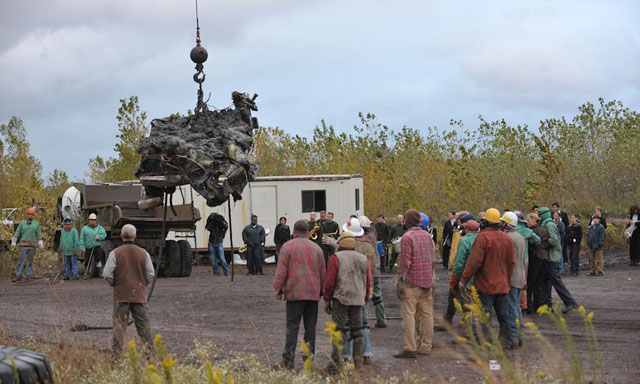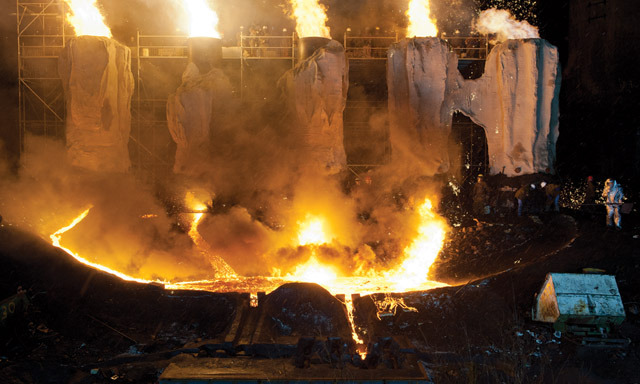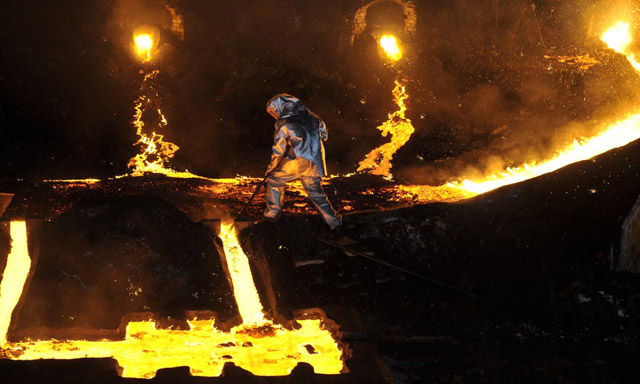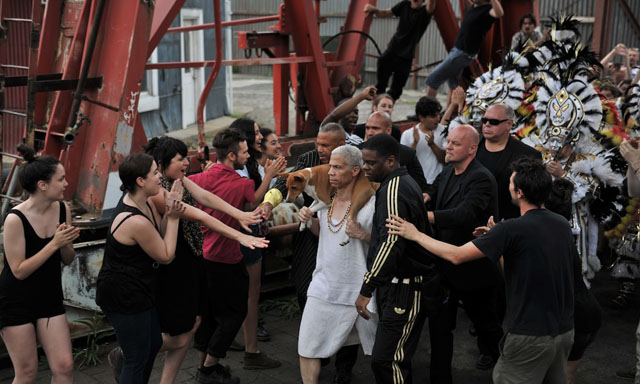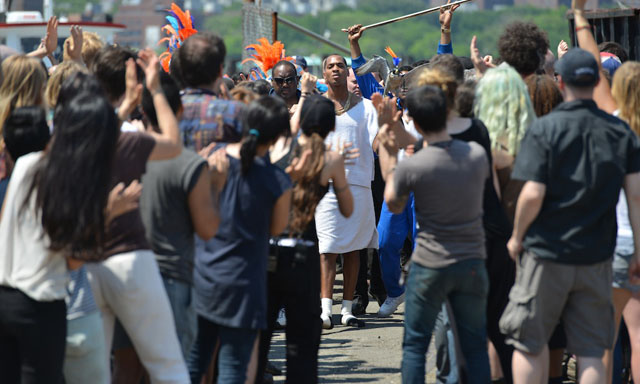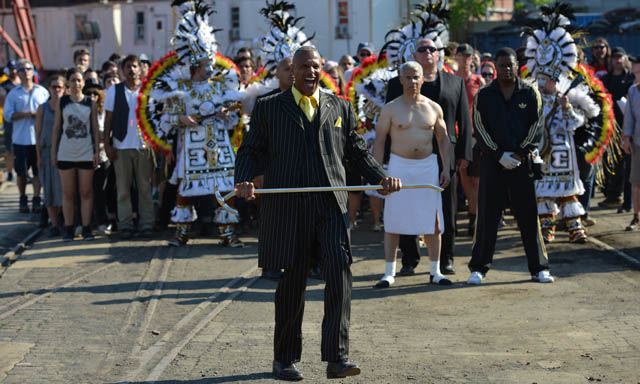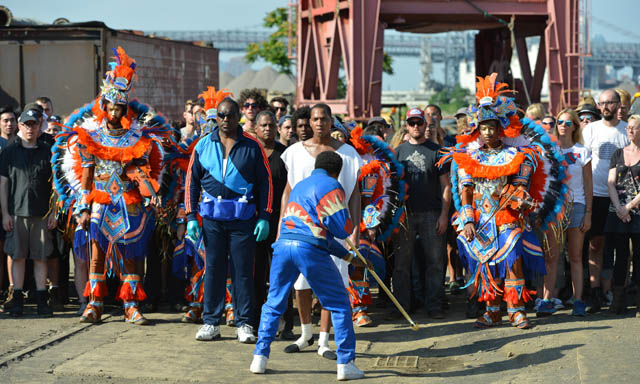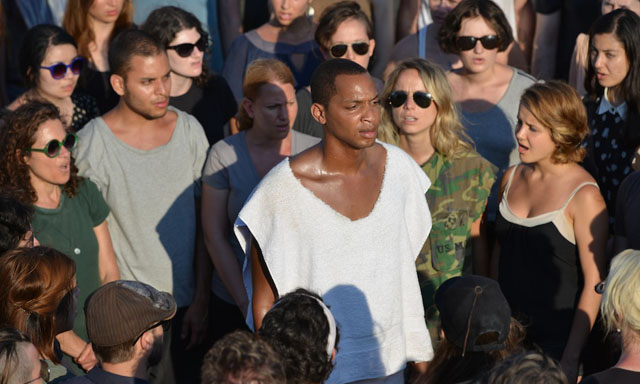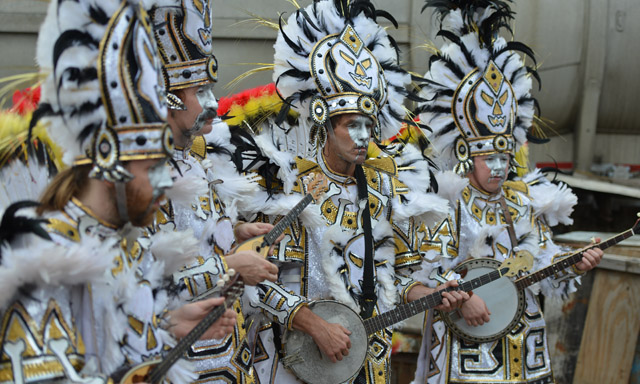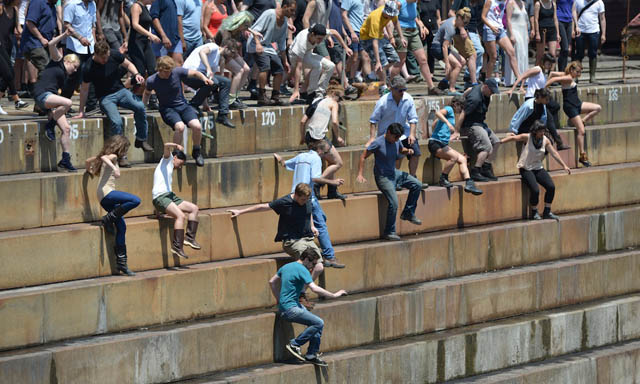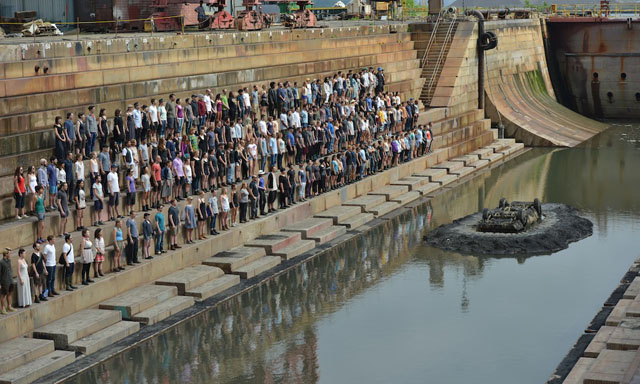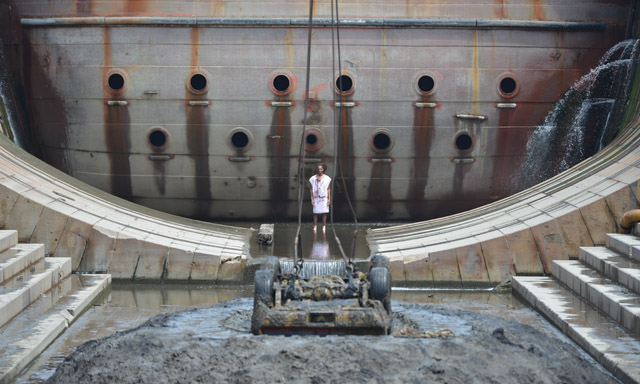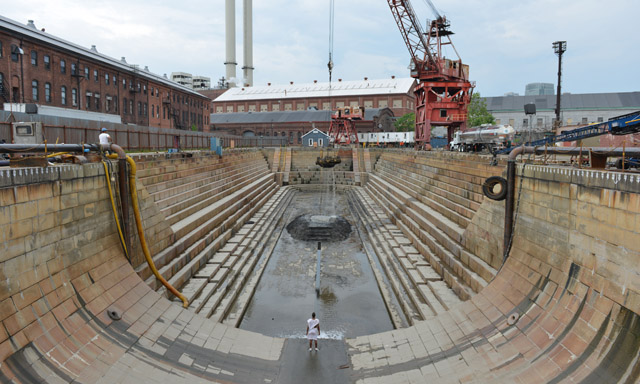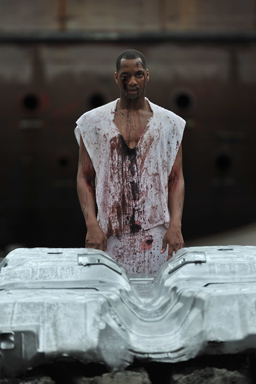Long Island City, NY
April 15, 2007
Manchester, UK
July 12, 2007
Guardian of the Veil was the first performance by Matthew Barney and Jonathan Bepler to explore the ideas that would come to define the River of Fundament project. A dress rehearsal was staged before an audience in New York, after which the work was performed in full at the Manchester Opera House as part of Il Tempo del Postino, a program of performance commissioned by the Manchester International Festival.
The performance began as four Sanitation Workers, accompanied by a cast of musicians, bore a veiled woman on a platform through a crowded lobby and into the theater. When the audience was seated, the curtain rose to reveal the woman lying atop the roof of a demolished Chrysler Imperial at center stage. A naked woman stood in with her feet embedded in a sarcophagus cast from petroleum jelly, her hand in her rectum. Two Sanitation Workers stretched a plastic veil over her head.
Anubis, the god of the afterlife who was was represented with the body of a man and the head of a dog, entered the space. He performed a series of burial rites on the car, first removing several engine parts and placed them into four funerary jars with lids in the shape of human and animal heads. He concluded by unfurling a gold Firebird decal from the hood of a 1980 Pontiac Trans Am and draping it over the Imperial hood.
Two half-naked dancers approached the Imperial. After circling the automobile they arched into backbends and urinated on the stage, initiating a ceremony of fertility. A procession of handlers and musicians entered the room leading the Apis Bull, an Egyptian animal-deity thought to embody the Ka, or spirit, of the god Osiris. The Apis Bull procession approached the back of the Imperial. Anubis had draped a cowhide over a large plastic form protruding from the back of the car, so that it resembled the rump of a cow. The handlers led the bull toward the back of the Imperial, where he paused to smell and lick the hide. Anubis fondled the bull's genitals in attempt to arouse him and coax him to mount the car. After a time, the bull walked away from the car and exited the theater. The shrouded woman removed her hand from her rectum, and a viscous black substance oozed out and dripped onto the floor, concluding the rite.
Los Angeles, California
May 18, 2008
REN, a live performance directed by Matthew Barney and Jonathan Bepler, was the first of three large-scale, site-specific actions in the River of Fundament project. The protagonist of REN was a 1967 Chrysler Imperial that underwent a ritual of destruction and subsequent rebirth in the form of a Pontiac Firebird Trans Am. A group of 400 onlookers witnessed an army of mechanics drag the Imperial through a car lot as a drum-and-bugle corps played a processional. When the Imperial reached the showroom of the dealership, it was stripped of its insignia as a Ranchera singer sang a funeral dirge. The protagonist's new embodiment, the Trans Am, left the dealership and processed to a warehouse. In the showroom, a massive stump-grinder shredded the Imperial, leaving only the four-cylinder block engine intact. The bystanders passed through the showroom and entered the parts and service department to find the Trans Am. The Egyptian god Khepera, represented by a human body with a beetle's head, appeared and emitted a black veil from her rectum, which the mechanics draped over the car as the Ranchera Singer sang a final aria.
In Egyptian spirit lore, the ren was a person's secret name, which, when spoken, had the power to preserve life.
Detroit, Michigan
October 2, 2010
KHU, a live performance directed by Matthew Barney and Jonathan Bepler, was the second of three large-scale, site-specific actions in the River of Fundament project. In KHU, three automobiles and a cast of human performers acted out the myth of Egyptian deities Isis, Osiris, Set, and Nephthys. Figuring in a prologue to KHU was a character outfitted as the Detroit-born artist James Lee Byars, an avatar for Osiris. Osiris was placed in the body of the Trans Am by the Egyptian god of chaos, Set, which was driven through the streets of Detroit and finally forced into the Detroit River.
As KHU began, a group of onlookers witnessed the production of metal violins in an abandoned glue factory while contralto Belita Woods sang an aria. They then boarded a barge down the River Rouge, a main artery of industrial Detroit. The barge came upon at a crime scene on the riverbank, where a female FBI agent enacted the myth of Isis searching for her lover Osiris. Osiris, in the form of the Chrysler Imperial destroyed in the preceding REN performance, was dredged up from the river. Isis recognized her husband in the form of the Imperial body, and was seen to copulate with the car to impregnate herself. The barge continued down the river until it reached the defunct Detroit Steel mill, where it was met by Set. Set, who earlier had murdered Osiris, ordered the body of the Imperial to be cut into 14 pieces. These dismantled car parts were fed into five monumental furnaces stoked and operated by ironworkers. When the furnaces were opened, molten iron flowed out into a casting pit, which filled a mold of the Chrysler Imperial's undercarriage. The cast iron formed a Djed column, an ancient symbol for Osiris.
New York, New York
June 29, 2013
BA, a filmed performance directed by Matthew Barney and Jonathan Bepler, was the final of three large-scale, site-specific actions in the River of Fundament project.
BA took place at the Brooklyn Navy Yard's dry dock, a large basin used for the construction and repair of ships. A chorus of 400 assembled to witness Horus and Set – the son and brother of Osiris in Egyptian mythology – in an epic battle for the crown. The crowd divided into two groups and gathered at entry gates on opposite ends of the dry dock. The spectators began to murmur in anticipation as Set and Horus approached the Navy Yard with their respective entourages decked out in elaborate costumes. Set carried a small dog on his shoulders, while Horus had a falcon perched on his arm, representing their respective totemic animals in Egyptian iconography. Each wielded a was staff, a symbol of power in ancient Egypt. The chorus cheered as Horus and Set, along with a cast of managers, trainers, and hype men, competed in a choreographed battle and exchanged mocking insults. With the victor unknown, Horus and Set descended the steps and disappeared into the water at the conclusion of the battle. As the water gradually receded, the chorus advanced down the stairs of the dock and saw the 1979 Pontiac Firebird Trans Am upside-down in a pile of silt. When all the water had drained, Horus appeared victorious at the bottom of the dock.
